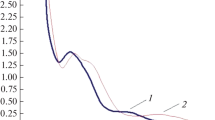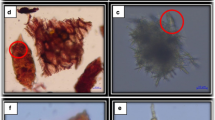Qualitative and quantitative analysis of flavonoids in the vegetative and reproductive organs of showy tick trefoil [Desmodium canadense (L) DC., Fabaceae] herbs (stems, leaves, buds, inflorescences, legumes, and seeds) collected at various stages of vegetation at the Department of Medicinal Herbs of the Kaunas Botanical Garden (Vytautas Magnus University) was performed using HPLC techniques. A total of 15 flavonoids of aglycon and glycoside nature including apigenin, apigenin-7-O-glycoside, luteolin, rutin, vicenin-2, vitexin, isovitexin, vitexin rhamnoside, orientin, homoorientin, quercitrin, quercetin, hyperoside, astragalin, and kaempferol were identified. Among the vegetative organs, the maximum amount of flvaonoids was found in leaves, where the total content of flavonoids was 23,952.2 mg/g in the budding phase and reached a maximum of 25,472.71 mg/g (2.55%) at the ripening phase (1.88 times greater than in herbs at the beginning of flowering). In stems, the maximum amount of flavonoids (2,318.0 mg/g) was accumulated in the budding phase while the minimum (1,910.77 mg/g) was found at the beginning of seed ripening phase. the maximum amount of flavonoids in the reproductive organs was found in inflorescences, where the total content of flavonoids was 8,164.1 mg/g at the budding phase, reached a maximum of 15,226.39 mg/g in the full flowering phase, and then gradually decreased. Legumes at the beginning of ripening contained 8,892.3 mg/g flavonoids while seeds in the fully ripened phase contained only 4,270.1 mg/g (0.43%) flavonoids. Among the individual flavonoids, orientin and homoorientin predominated in all cases. Thus, not only the inflorescences of showy tick trefoil but also leaves can be used as medicinal raw material. The optimum time for collecting leaves for the raw material is from the budding phase until the beginning of fruit ripening.
Similar content being viewed by others
Reference
G. Puodziunene, V. Janulis, L. Ivanauskas, et al., Khim.-farm. Zh., 43(5), 33 – 36 (2009).
Author information
Authors and Affiliations
Additional information
Translated from Khimiko-Farmatsevticheskii Zhurnal, Vol. 43, No. 6, pp. 18 – 21, June, 2009.
Rights and permissions
About this article
Cite this article
Puodziunene, G., Janulis, V., Ivanauskas, L. et al. Quantitative estimation of flavonoids in the vegetative and reproductive organs of showy tick trefoil (Desmodium canadense). Pharm Chem J 43, 324–327 (2009). https://doi.org/10.1007/s11094-009-0296-x
Received:
Published:
Issue Date:
DOI: https://doi.org/10.1007/s11094-009-0296-x




